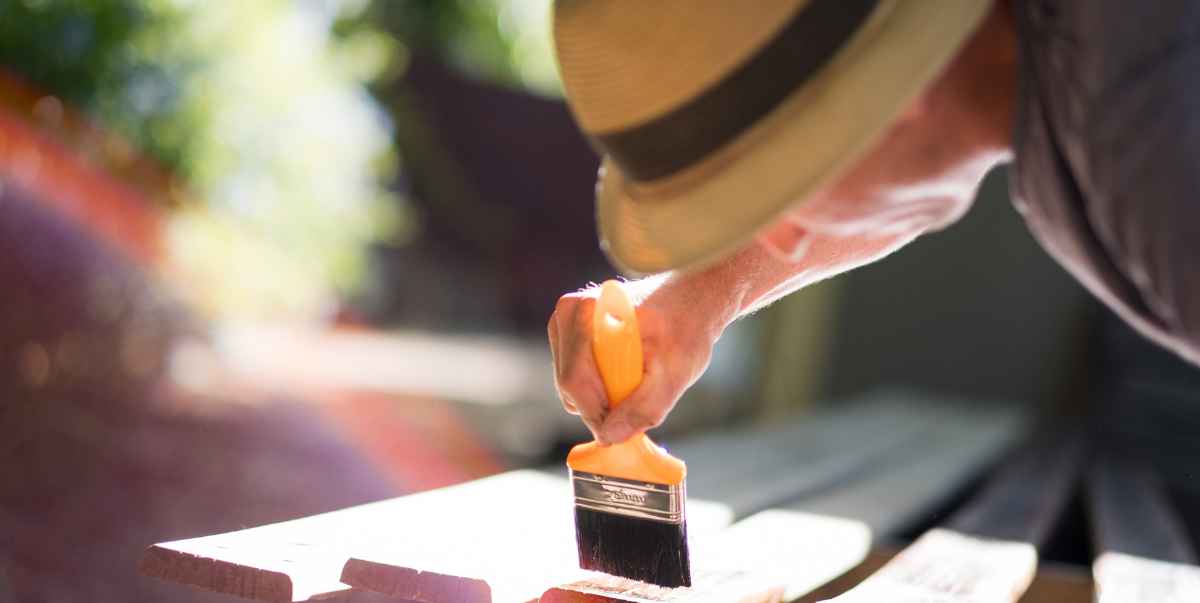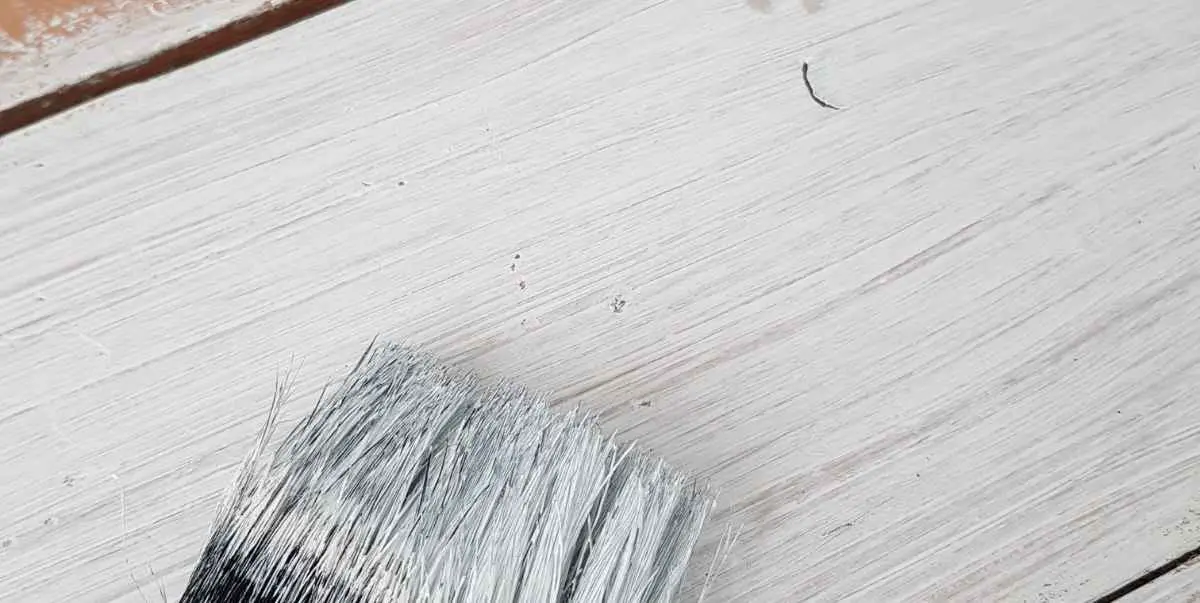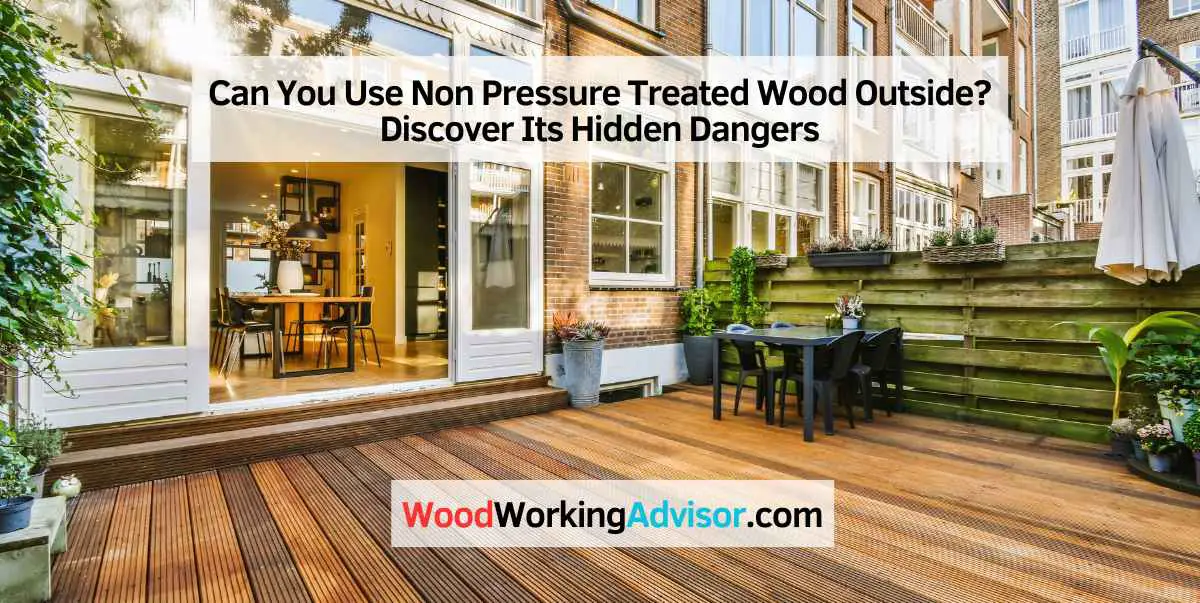No, non-pressure treated wood is not recommended for outdoor use because it is not resistant to moisture and decay. Using non-pressure treated wood outside can lead to structural integrity issues and a shorter lifespan for the wood.
Using the right type of wood is essential when it comes to outdoor projects. While pressure treated wood is commonly used for outdoor projects due to its durability, you may wonder if non-pressure treated wood can be used outside. Non-pressure treated wood, unfortunately, does not have the same resistance to moisture and decay as pressure treated wood.
This means that using non-pressure treated wood for outdoor purposes can result in problems such as rotting, warping, and a shorter lifespan for the wood. We will explore the reasons why non-pressure treated wood is not suitable for outdoor use and discuss alternative options for outdoor projects.
The Importance Of Using Pressure Treated Wood Outdoors
When it comes to building outdoor structures or furniture, choosing the right type of wood is crucial to ensure longevity and durability. One such option that stands out in terms of reliability is pressure treated wood. This specialized type of wood has undergone a treatment process that enhances its resistance to rot, decay, and insect damage. In this article, we will explore what pressure treated wood is, as well as the numerous benefits it offers for outdoor projects.
What Is Pressure Treated Wood?
Pressure treated wood is a type of lumber that has been treated with chemicals under pressure. This treatment process involves immersing the wood in a liquid preservative and then placing it inside a pressure chamber. The combination of pressure and the preservative helps the wood absorb the chemicals, making it highly resistant to pests, decay, and weathering.
Benefits Of Using Pressure Treated Wood Outdoors
- Resistance to decay: Pressure treated wood is designed to withstand outdoor elements that usually cause wood to rot, such as moisture, fungus, and termites. This means that structures or furniture made with pressure treated wood are less likely to decay and deteriorate over time.
- Longevity: Unlike untreated wood, pressure treated wood has a significantly longer lifespan. It can endure harsh weather conditions, intense sunlight, and constant exposure to moisture without warping or deteriorating. This makes it an ideal choice for outdoor projects that require durability and strength.
- Cost-effective: While initially pressure treated wood may be more expensive than untreated wood, its long-term benefits outweigh the cost difference. With its extended lifespan, you won’t need to replace or repair structures as frequently, saving you money in the long run.
- Versatility: Pressure treated wood is available in various sizes and grades, making it suitable for a wide range of outdoor projects. Whether you are building a deck, a fence, or garden furniture, pressure treated wood can be easily customized to your desired specifications.
- Environmentally friendly: The chemicals used in pressure treated wood today are considered to be safe for the environment and human health. They are low in toxicity and have minimal impact on the surrounding soil, making pressure treated wood a responsible choice for outdoor construction.
In conclusion, using pressure treated wood for your outdoor projects is essential for long-lasting and sturdy structures. Its resistance to decay, longevity, cost-effectiveness, versatility, and eco-friendliness make it a reliable choice. By selecting pressure treated wood, you can ensure that your outdoor space remains beautiful, functional, and durable for years to come.

Hidden Dangers Of Using Non Pressure Treated Wood Outside
When it comes to using wood for outdoor projects, it’s important to consider the hidden dangers of using non pressure treated wood. While non pressure treated wood may seem like a cost-effective option, it can pose significant risks and drawbacks in terms of durability and longevity. In this article, we will explore some of the key hidden dangers you need to be aware of when using non pressure treated wood outside.
Risk Of Rot And Decay
One of the primary dangers of using non pressure treated wood outside is the increased risk of rot and decay. Non pressure treated wood is not treated with chemicals that help prevent water absorption and protect against rot that can occur due to exposure to moisture. Without this treatment, non pressure treated wood is more susceptible to moisture damage, which can lead to decay and structural weakness.
Moreover, without proper protection, non pressure treated wood can easily become a breeding ground for fungus and mold, further accelerating decay and compromising its overall integrity. This can result in expensive repairs or even the need for complete replacement of the wood.
Increased Vulnerability To Insects And Pests
In addition to rot and decay, non pressure treated wood is also more vulnerable to insects and pests. Without the chemical treatments found in pressure-treated wood, non pressure treated wood becomes an attractive target for wood-boring insects such as termites and carpenter ants.
These pests can quickly infest and weaken the wood, leading to structural instability and potential safety hazards. Insects like termites can silently wreak havoc on non pressure treated wood, causing extensive damage that may not be immediately noticeable.
Limited Durability Against Weather Elements
Another danger of using non pressure treated wood outside is its limited durability against weather elements. Non pressure treated wood is more susceptible to damage from exposure to sunlight, rain, snow, and temperature fluctuations. Without the protective chemicals found in pressure-treated wood, non pressure treated wood is prone to warping, splitting, and cracking.
This limited durability can significantly shorten the lifespan of non pressure treated wood, requiring frequent maintenance, repairs, or replacement to maintain its structural integrity.
| Risks of Using Non Pressure Treated Wood Outside |
|---|
| Risk of rot and decay |
| Increased vulnerability to insects and pests |
| Limited durability against weather elements |
Overall, while non pressure treated wood may initially seem like a budget-friendly option, it poses hidden dangers that can lead to higher long-term costs and potential safety hazards. Considering the risk of rot and decay, increased vulnerability to insects and pests, and limited durability against weather elements, it is recommended to choose pressure-treated or alternative rot-resistant materials for outdoor projects that require longevity and structural integrity.
Alternative Materials For Outdoor Use
When it comes to using wood for outdoor projects, pressure-treated wood is often the go-to choice due to its durability and resistance to rot and insects. However, if you prefer to avoid pressure-treated wood, there are several alternative materials that can be used for outdoor applications. These materials offer their own unique benefits and can be a great option for those looking for alternatives to pressure-treated wood. In this article, we will explore three popular alternatives: cedar wood, composite wood, and thermally modified wood.
Cedar Wood
Cedar wood is a popular choice for outdoor applications. It is naturally resistant to decay and insects, making it a durable and long-lasting option. Cedar wood is known for its beautiful reddish-brown color and distinctive grain patterns, which can add visual interest to any outdoor project.
Here are some key advantages of using cedar wood:
- Resistance to rot: Cedar wood’s natural oils act as a barrier against moisture, preventing rot and decay.
- Insect repellent: The natural compounds found in cedar wood make it unattractive to insects such as termites and carpenter ants.
- Weather-resistant: Cedar wood can withstand exposure to harsh outdoor elements, including sun, rain, and snow, without significant damage.
Overall, cedar wood is a versatile and appealing alternative to pressure-treated wood for outdoor use.
Composite Wood
Another popular alternative to pressure-treated wood is composite wood. Composite wood is made by combining wood fibers or sawdust with plastic resin to create a durable and low-maintenance material. It offers the look and feel of real wood while providing enhanced resistance to rot, insects, and fading.
Here are some benefits of using composite wood:
- Durability: Composite wood is highly resistant to warping, cracking, and splintering, making it ideal for outdoor applications.
- Low maintenance: Unlike traditional wood, composite wood does not require regular sealing, staining, or painting. It can be easily cleaned with soap and water.
- Color options: Composite wood comes in a wide range of colors and finishes, allowing you to achieve the desired aesthetic for your outdoor project.
Composite wood is an excellent alternative for those seeking a low-maintenance and long-lasting material for their outdoor projects.
Thermally Modified Wood
Thermally modified wood is a type of wood that has undergone a heat treatment process, altering its chemical and physical properties. This process enhances the wood’s natural resistance to decay, insects, and moisture, making it highly suitable for outdoor use.
Here are some advantages of using thermally modified wood:
- Increased stability: Thermally modified wood has improved dimensional stability, meaning it is less likely to warp, twist, or shrink when exposed to changing weather conditions.
- Natural resistance: The heat treatment process removes moisture and organic compounds from the wood, reducing its susceptibility to rot and insect damage.
- Enhanced aesthetics: Thermally modified wood often develops a rich, dark color, providing a unique and visually appealing look to outdoor projects.
Thermally modified wood offers an eco-friendly and durable option for outdoor applications.

Tips For Safely Using Non Pressure Treated Wood Outside
Using non pressure treated wood outside can be a cost-effective and versatile option for your outdoor projects. However, it’s important to take some precautions to ensure the wood lasts and remains safe in outdoor conditions. Here are some tips to help you safely use non pressure treated wood outside.
Applying Wood Preservatives
To protect non pressure treated wood from weathering, insects, and decay, it’s essential to apply wood preservatives. Wood preservatives not only extend the life of the wood but also provide added resistance to moisture and pests. When choosing a wood preservative, make sure to select one that is specifically designed for outdoor use. Before applying the preservative, ensure that the wood is clean and dry. Apply the preservative evenly, following the manufacturer’s instructions, and allow it to dry completely before using the wood for your outdoor project.
Regular Maintenance And Sealing
Regular maintenance is crucial to keep non pressure treated wood in good condition outdoors. This includes inspecting the wood for signs of damage, such as cracks or warping, and addressing any issues promptly. Additionally, sealing the wood with an exterior-grade sealant can provide an extra layer of protection against moisture and UV damage. Choose a sealant that is compatible with the wood type and follow the application instructions carefully. Regularly check the sealant for any wear and reapply as needed to maintain the wood’s longevity and appearance.
Elevating The Wood Off The Ground
Elevating non pressure treated wood off the ground is essential to prevent moisture-related problems. Direct contact with the ground can lead to rot and decay over time. To avoid this, use supports, blocks, or a foundation system to raise the wood off the ground. This allows airflow underneath the wood, reducing the chances of moisture buildup. This practice is especially important for structures like decks, fences, or raised garden beds where the wood is in constant contact with the ground.
By following these tips, you can safely use non pressure treated wood outside while ensuring its durability and longevity. Whether you’re building a deck, a garden structure, or any other outdoor project, these precautions will help you make the most of your non pressure treated wood investment.
Conclusion
Non pressure-treated wood can be used outside, but it is important to consider its limitations. Without the protection provided by pressure treatment, non-treated wood is vulnerable to decay and insect damage. However, using it in certain applications, such as decorative elements or short-term projects, can be a viable option.
Ultimately, it is crucial to weigh the pros and cons and make an informed decision based on specific project requirements and budget.


